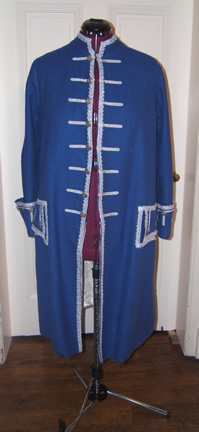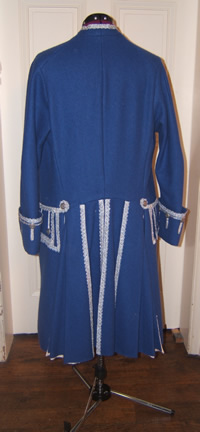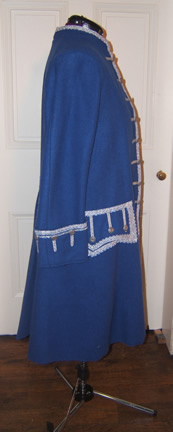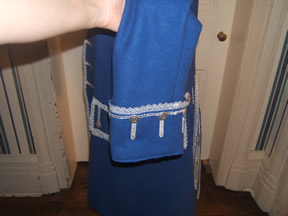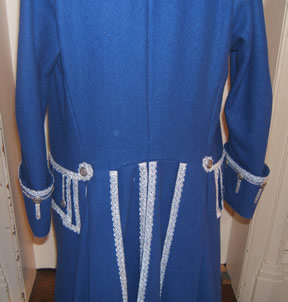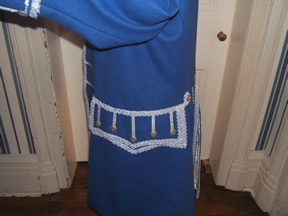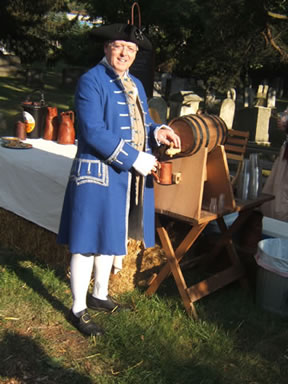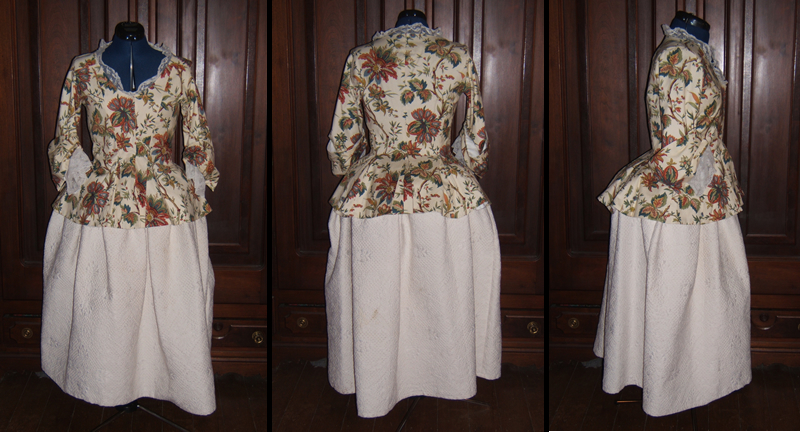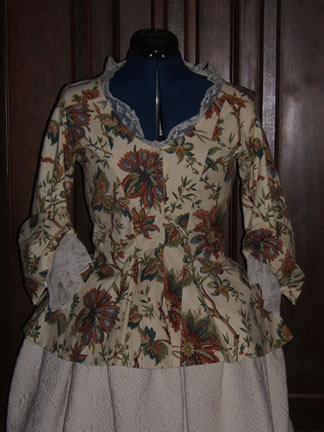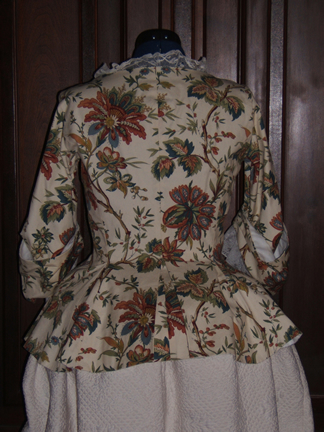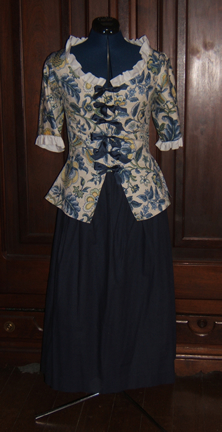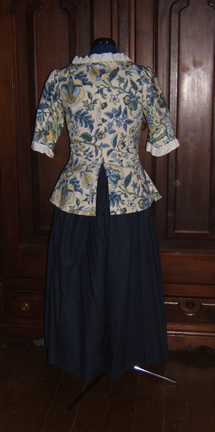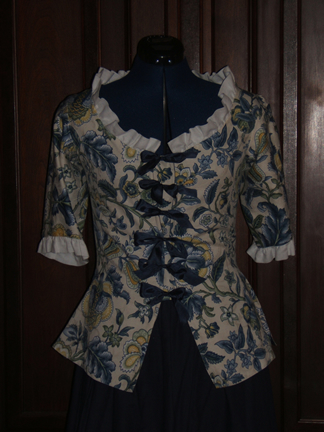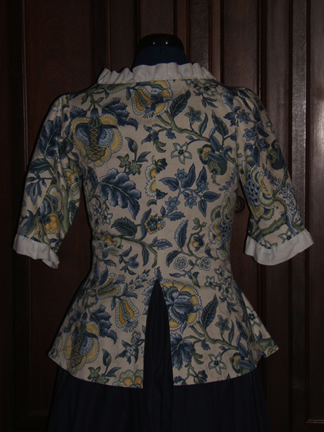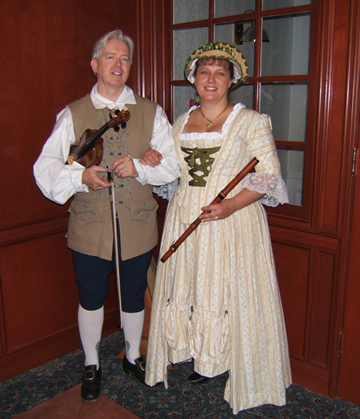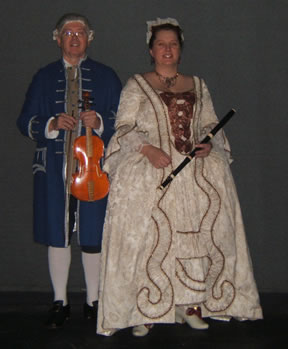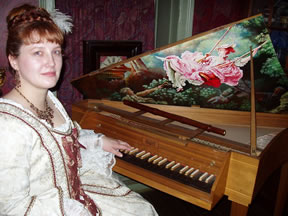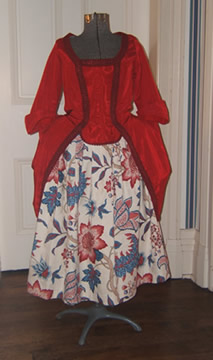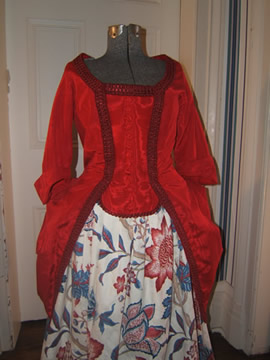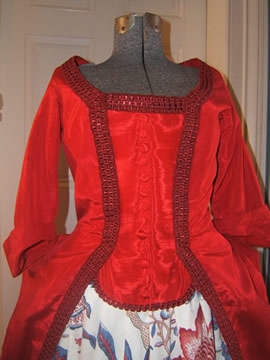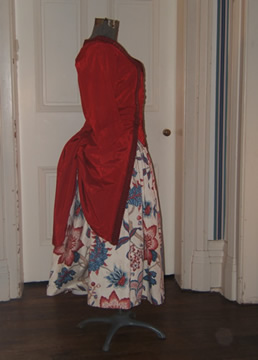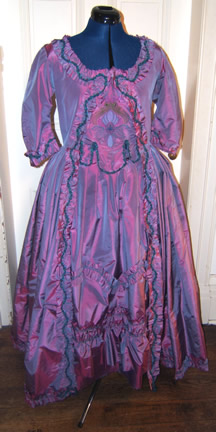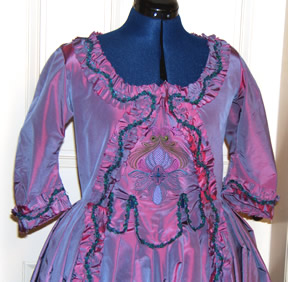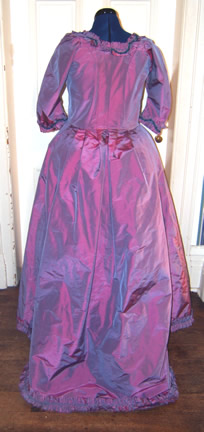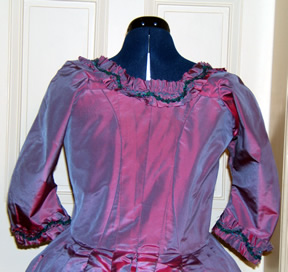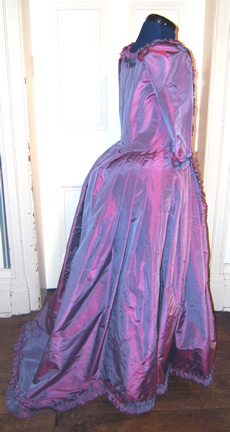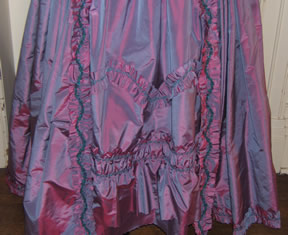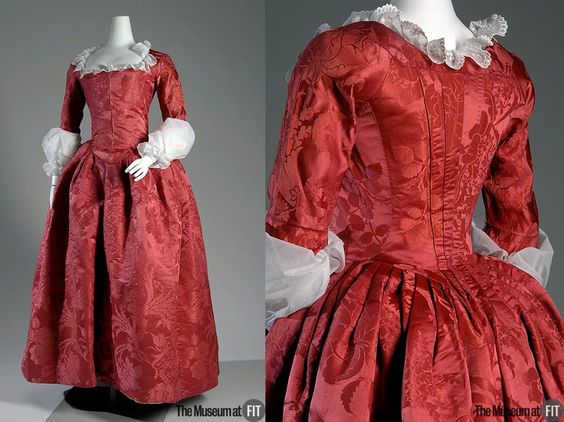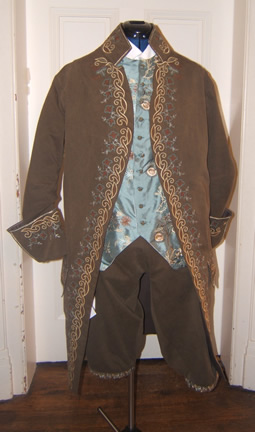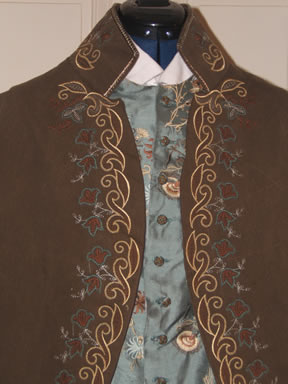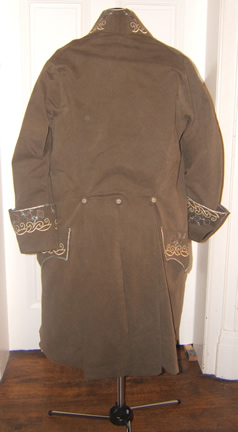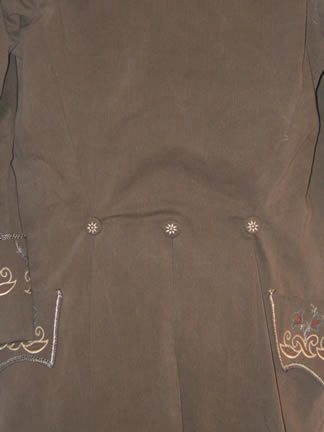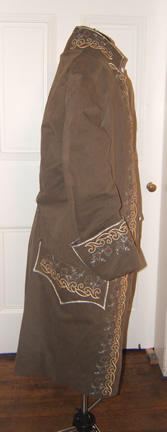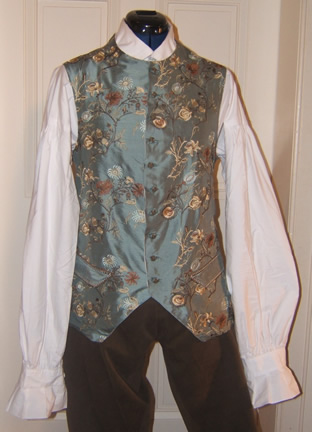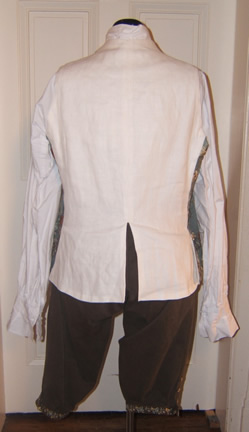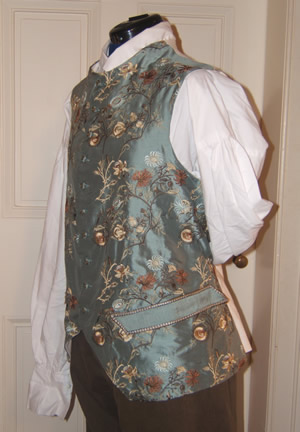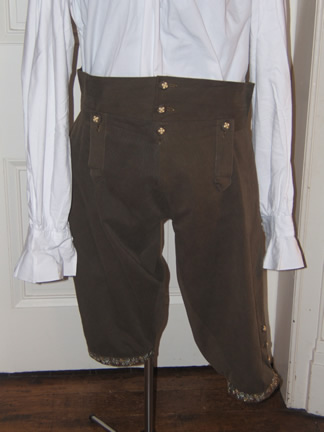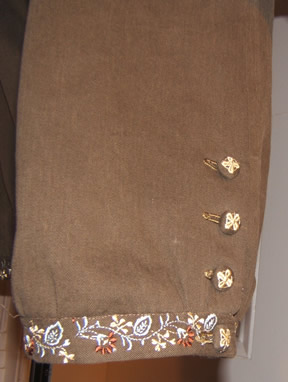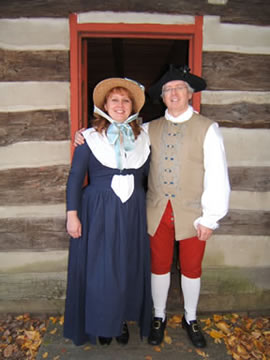

Main Menu
Portfolio Main Menu
Medieval
18th Century
Regency
Romantic
Antebellum/Civil War
Late Victorian
Edwardian
Underpinnings
Millinery

Colonial / 18th Century
This site is no longer being updated - Go to NEW Site!
This period is known by a number of titles - Baroque, Colonial, and Georgian among them. In the early 1700's the dominant item of women's dress was the mantua, which was an overdress worn over a stomacher and petticoat that was at the sides and often had a train. This form of dress developed into the petticoat and robe with stomacher that many people now recognize as "Colonial" or "Marie Antonette".
An important feature that defines this period is the shape of the corset. The corset (or stays) were heavily boned with either walebone or reed. At the sides of the front, the boning of the stays slants towards the center front resulting in a cone shape. The petticoat was intended to be seen, as the robe worn over it was open in the front. The robe had a bodice that often did not close in front - this area would then be filled in with a trianglular stomacher. The skirts of the robe were attached and open in front. The edges of these skirts, the bodice of the robe, and the petticoat were often decorated with ruffled strips of fabric called ruesching. The robe had sleeves that were 3/4 length, coming just below the elbow. These sleeves were usually worn with ruffles made of lace or embroidered linen know as engageante (sleeve ruffles). By the end of the century the fashionable sleeve was long and fitted.
In the early decades of the 18th century the petticoats were round. By the 1730's this had evolved into what the Victorians dubbed "panniers" - hooped petticoats that were wide on the sides and relatively flat in the front and back. This shape had a big advantage in that it showed off the decorations on the skirts of the robe. By the 1780's the fashionable shape changed to a full skirt with a bustle pad in the back. The skirts of the robe were then drawn up with loops on the inside. This style was known as the polonaise. Clothing styles changed dramatically following the French Revolution in the 1790's. The waistlines of the gowns rose very high until they were just under the bustline. This is the Empire style that arose due to Greek influences. The city of Pompei was discovered at this time and created a fascination with all things "Grecian". This style dominated the early decades of the 19th Century.
Men's clothing consisted of a shirt, breeches, a waistcoat, and an overcoat. The breeches came to just below the knee. It was fashionable to show off your calves and if you were not blessed with nice muscular ones, you could stuff your hose with horsehair! The shirt was considered an undergarment and very few men would go out without at least a waistcoat over it. The waistcoat could either have sleeves or not. It buttoned down the front and covered the top of the breeches. In the early to mid part of the century the waistcoat was thigh length and straight in front. In the 1770's the waistcoat was shorter and often the bottom front was cut to slant towards the sides. A neck stock with or without ruffles was worn around the neck, and sometimes a cravat. A carvat is a scarf like peice of silk that is tied around the neck - there are many ways to tie a cravat. The cravat is the ancestor of the modern neck tie.
The coat began the cetury as a long outer garment - it usually came down to the bottoms of the breeches. The skirts of the coat were very full in the early part of the century. By mid century the cut was straighter, and by the 1780's was cut away at the front and often did not button closed at all. This style showed off the waistcoat to great advantage, and often the waistcoat, the front opening of the coat, and the pockets of both garments were decorated with embroidery and/or braid.
